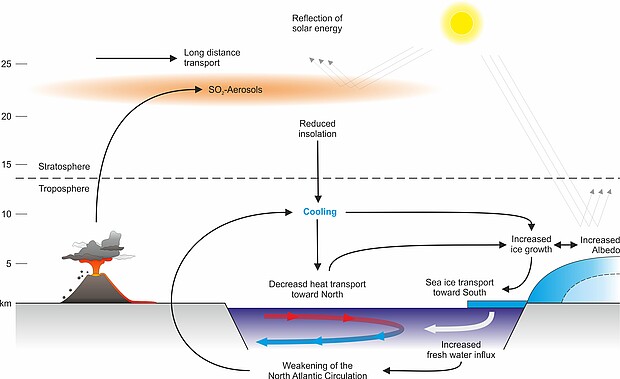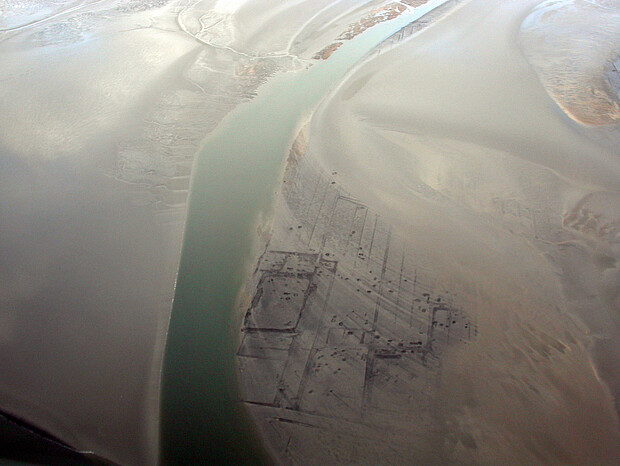Between the Roman Climate Optimum and the Year Without a Summer 1816 – Climatic changes and their consequences for landscape, vegetation and settlement development
Since time immemorial, climatic changes have influenced the ecological preconditions and the associated living conditions of humans in various ways. Medium- and short-term climate fluctuations, caused by changes in solar radiation or extreme geological events, had an appreciable impact on the regional environmental conditions. Prominent examples are the Roman Climatic Optimum, the Late Antique Little Ice Age, the Medieval Warm Period, the Little Ice Age and the Year Without a Summer.
The Roman Climatic Optimum and the Medieval Warm Period designate periods with a comparatively warm climate. The assumed warmest period in the northern hemisphere was between 950 and 1250. A proper oceanic-atmospheric circulation system and relatively low volcanic and solar activities provided good initial conditions. Agricultural and demographic expansion arose during this period.
The Late Antique Little Ice Age and the Little Ice Age were distinct cold phases of varying intensity between 536 and 660 and between the 15th and 18th centuries, respectively. Each with a series of intense volcanic eruptions. Large amounts of eruptive ash reached the stratosphere. A complex interaction of solar radiation, oceanic circulation and ice coverage led to a climate cooling. Consequences were cool and humid summer periods and a shift of the growth phases. The climatic effects were noticeable throughout Europe, but with regional differences. Similarly disastrous was the outbreak of Tambora volcano, followed by the "year without a summer" in 1816. Hunger, epidemics and migrations characterized the human life in broad parts of the Western Hemisphere.
Indirect climate indicators, so-called climate proxies, are used to reconstruct the paleoclimate. The proxies are recorded in well datable archives. Such archives can be botanical remains, tephric deposits and the chemical-physical composition in lake sediments or ice cores, growth marks of trees or corals and last but not least historical records. Depending on the quality, climate models of different temporal resolution and spatial differentiation are the result.
The cultural and sociological effects of climate change are evident in the archeological record. Settlement areas with a long continuity suddenly die away, cease or move to other regions. Foreign cultural influences, indicative of migration, emerge abruptly. Not every change in the archaeological context is at the same time a consequence of climatic and environmental changes. Major uncertainties exist in the varying chronological resolution, regional distribution, and the temporal distance between cause and effect of such a change. A lack of understanding between cultural and natural sciences often leads to the hasty construction of connections to cause and effect of climate on culture, which are not tenable on closer examination.
In this three-year interdisciplinary research project, the relevant research on landscape, vegetation and settlement development over the past two millennia in the North Sea and Baltic Sea regions is to be brought together in a meta database. This database is to provide a basis for the initiation of an interdisciplinary research concept. The aim is that international cooperation partners from different disciplines in cultural and natural science develop high-resolution and spatially differentiated scenarios that depict climate development in the North Sea and Baltic Sea regions and its cultural consequences in a better and more differentiated way as done in the past.
In case of any questions about the project please contact Daniel Hepp or Hauke Jöns.



